One evening a few years ago, as the sun was setting over Southern California, Marsha Valencia and her husband returned from a walk in a nature reserve near their home. It was past closing time, and a park ranger in uniform was locking the gates. They ran to catch him, expecting a ticket—in addition to being late, they’d brought their dog, against the rules. The ranger scolded them amiably and made them promise to do better; then, to their surprise, he allowed them to drive through.
Valencia, who identifies as Native American, then asked if she could pick wild sage beside the parking lot. The ranger’s mood changed. He abruptly refused. Valencia explained that she just wanted a few leaves for ceremonial use; the plants would barely be affected at all. “If you pick anything,” the ranger told her, “I’ll have you arrested.”
Valencia recently told me how angry this had made her. “This white man is telling me he’s going to arrest me,” she said. “I was like, ‘Excuse me? As an Indigenous woman?’” A youthful 50 year-old with freckled cheeks and greying hair, Valencia meditates and sits in women’s circles; her vibe is abundantly “present.” In almost every respect she is unlike the ranger, Ron Goodman, who loves beer, crude jokes and maintaining order. He also loves football, though he hasn’t watched a game since players began taking the knee.
The two of them started talking. Valencia explained that white sage, an herb native to Southern California, was central to her spiritual practice, used by local tribes for thousands of years. She said how difficult it had become to collect in the wild—how, in many places, entire patches had completely vanished. Goodman replied that he knew all about this; that’s why he’d been so harsh with her. Almost daily there were poachers in the reserve, harvesting hundreds of pounds at a time.
White sage has become a staple of the wellness era, sold in Walmart and on Amazon and shipped around the world. The plant’s dried leaves are burned for rituals known as “smudging” that have been appropriated from Native American use into the cultural mainstream. The hashtags #WhiteSage and #Smudging appear hundreds of thousands of times on Instagram. Until recently, Goop dubbed its newsletter “inbox sage for the digital age.” Dried sage bundles, or “wands,” are ubiquitous in yoga studios and head shops, but also at concerts, in conference rooms, and even at churches. Protestors in the United States burned sage at recent Black Lives Matter marches; in English cities, there were “sage walks” to ward off the coronavirus. The plant has taken on new resonance in an age of upheaval, widely coming to signify purification and tranquility. In Japan, demand for its purported cleansing properties surged following the Fukushima nuclear disaster.
Yet the supply chain for this global product is almost completely unregulated, driving declines of white sage in the wild and making it harder for Native users to harvest a plant they consider sacred. The species occurs naturally on the plains and mountains of Southern California, across the border in parts of Northern Mexico, and nowhere else on earth. Almost all white sage being sold commercially is “wildcrafted,” or harvested from nature, often by poachers who earn “cents on the dollar,” as Goodman told me. This sage passes through a series of middlemen and wholesalers before reaching the market—usually from companies that market themselves as environmentally conscious. “Everybody wants wellness these days, and they look to Native Americans as people who still have a connection to nature,” said John Banacky, a volunteer who accompanies Goodman on patrols. “They see white sage and they want it. That’s why the market is blowing up.”
The small reserve Goodman and Banacky protect has become the epicenter of this market, with reports of poaching almost daily in spring and summer, when white sage is best for harvesting. (VICE is not naming the reserve in the interest of protecting it from additional poaching.) The police have taken to sending out helicopters and sniffer dogs, recording dozens of arrests—and confiscating multiple tons of plant material—in just the last three years. “These aren’t just your holistic shop owners going out and collecting,” Lieutenant Jeff Allison, a spokesman for the San Bernardino County Sheriff’s Department, said. “This is clearly a money-making effort.”
Such rampant exploitation has severely stunted the sage, which grew shoulder-high less than a decade ago, forming impenetrable thickets, but now seldom reaches above the waist. When I visited in January, every shrub I saw had multiple woody scars where entire stems had been clipped off. Although the species, Salvia apiana, is not yet classified as threatened, United Plant Savers, a conservation nonprofit, has placed it on its “to watch” list. Cassidy Adlof, an ethnobotanist who wrote a master’s thesis on white sage harvesting, told me that, in addition to rising demand, the species is facing threats from habitat loss and climate change. “I’m concerned about commercial harvest,” Adlof said.
A member of the mint family, white sage is a hardy shrub with tapering silver leaves that, like many herbs, grows more vigorously when pruned—but only to a point. The species still thrives in some remote and inaccessible areas, including on private property, but across much of its range has been reduced to mere fragments. This is why poachers are now targeting reserves, risking fines and in some cases jail; outside reserves, where harvesting white sage is still legal, the plant, once abundant, is increasingly scarce. Pickers have stripped sage from highway verges and vacant lots—often coated with soot and other chemicals that customers might not wish to burn in their homes—and backed trucks over fences to rob sage from private land. One woman from Riverside County, a fair distance from the reserve, has twice called the police after finding trespassers cutting sage on her property.
This rush for white sage is starkly at odds with how the plant is consumed, offering a cautionary tale for the wellness economy—one where the virtuous intentions of users can be subverted by unaccountable suppliers, and where even many sellers of sage have no idea of their impacts. Over a single weekend in July, people burning white sage on Instagram included a massage therapist in Puerto Rico, a realtor in Maryland, a nursery owner in Hanoi, a photographer in Sydney. There was a jeweler in Hong Kong and a yoga teacher in Dublin. A medical student from Chicago told me that smudging brought her “peace, calmness and a sense of being grounded," adding, “It didn’t cross my mind in terms of being overharvested.” In Switzerland, a self-described “chaos magick practitioner” said she used sage “for cleansing spaces” but had heard, recently, that the species was endangered. A hairdresser from Atlanta, now living in Los Angeles, told me she’d been using white sage since 2015 but only learned last year that it was a Native American ritual. “I was angry with the people who taught me,” she said, “for never bringing that up.”
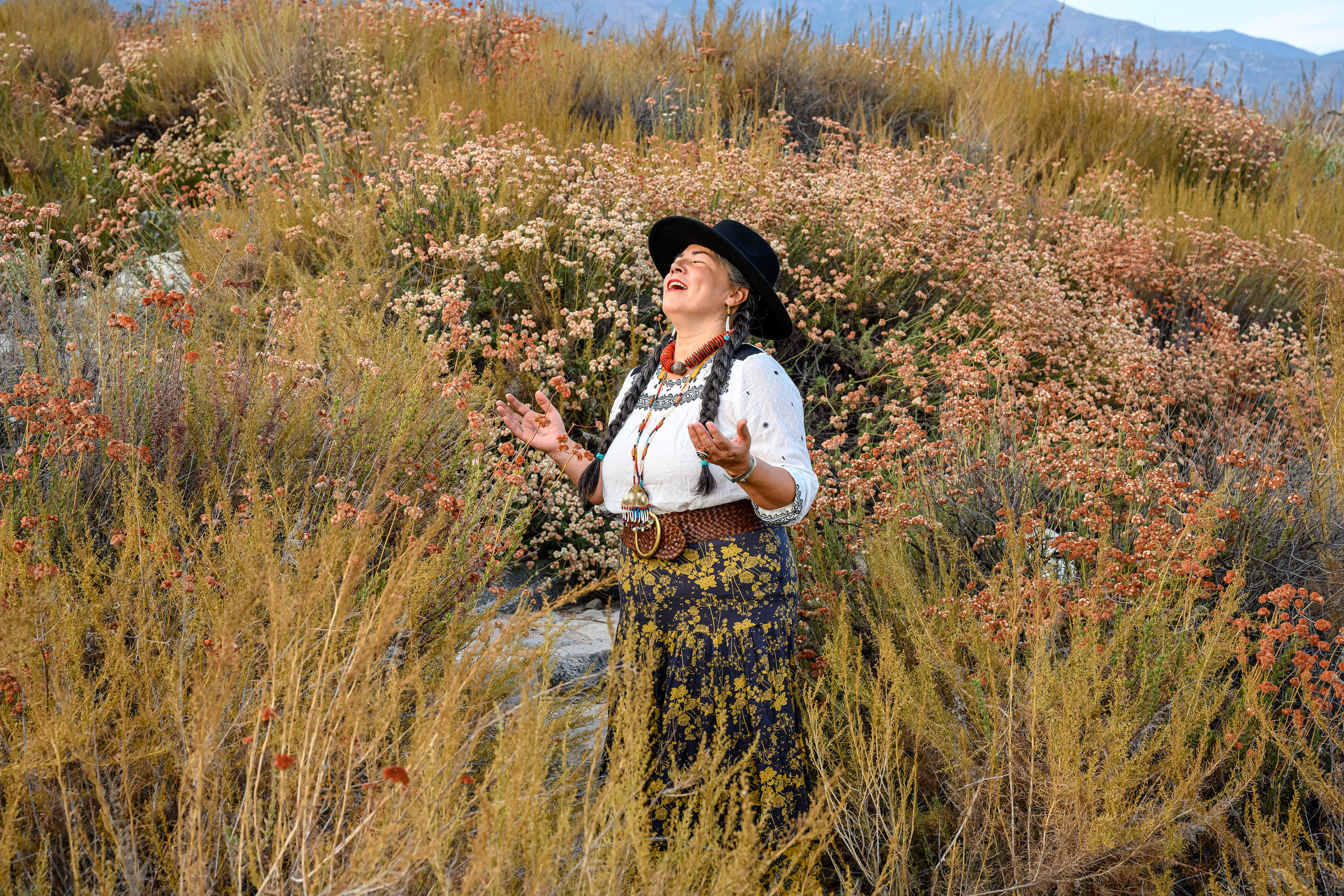
Valencia grew up in Los Angeles in a family that identified as Hispanic. “We were Mexican,” she said. End of story. One of her grandfathers would occasionally share stories and songs of the Yaqui, a group of tribes with roots in the Sonoran Desert, but her other relatives, she told me, “were afraid to acknowledge who we were.”
As in the United States, being identified as indigenous was often dangerous in Mexico, where tribal groups were enslaved and violently dispossessed of land—both during the colonial era and after independence. Over a period of nearly 400 years, Spanish and Mexican authorities waged successive military campaigns against the Yaqui, including several massacres of women and children; as a consequence the tribes became, as one historian wrote in 1947, “probably the most widely scattered of North American Indians.” Thousands of Yaqui fled to the United States, where one tribe, the Pascua Yaqui, was eventually federally recognized and granted land in Arizona. Yet the United States, too, was profoundly hostile to indigenous people, from genocidal wars to forced assimilation into missionaries.
As she grew older, Valencia began questioning her heritage. She made contact with tribal elders who began calling her “The Lost Yaqui.” Her great-grandmother, she discovered, had been a medicine woman who worked with herbs. She asked older relatives about this, but they refused to discuss it. Without documentation of her family history, Valencia said she has been unable to prove that she is descended from the Yaqui or to obtain certification from the U.S. Bureau of Indian Affairs; this would have permitted her to harvest native plants for personal use, including from nature reserves, although she told me her beliefs would have prevented her from picking sage from damaged plants. (Esperanza Valenzuela, a research assistant at the Pascua Yaqui tribal office, told me that Valencia’s experience—not being able to enroll due to family members renouncing their tribal roots—was “very common.”) In the company of Yaqui people, Valencia said, she often found herself feeling uncomfortable, even embarrassed: “Nobody knows me here. Do I belong?”
In her early twenties, Valencia met a Native activist named Julia Bogany who began inviting her to inter-tribal women’s ceremonies. At one of these events, Valencia was smudged for the first time. An elder lit white sage and stirred the smoke with an eagle wing. “My cells recognized the smell,” Valencia said, speaking through tears. “It was like, ‘Welcome home.’”
At that moment she felt herself connected to a spiritual legacy stretching back thousands of years. Along with other fragrant plants like cedar and sweetgrass, white sage is burned for purification and prayer, a custom that was forbidden by federal law until 1978. (An unrelated species, known as white sagebrush or blue sage, was used elsewhere in America and today is also harvested commercially for smudge sticks, although demand is lower and the species is more widespread than white sage.) These traditions survived in spite of prohibitive legislation and began evolving in the 1950s, when the U.S. government set up work programs to draw Native people into cities. Within a decade, the Native population of Los Angeles had more than quadrupled, swelled by migrants from tribal reservations across the country. Amid such sweeping dislocation, white sage “was adopted by urban Indians because it was easy to find,” write the ethnobotanists Rose Ramirez and Deborah Small. “Its use then spread throughout Native America and attained a pan-Indian status.”
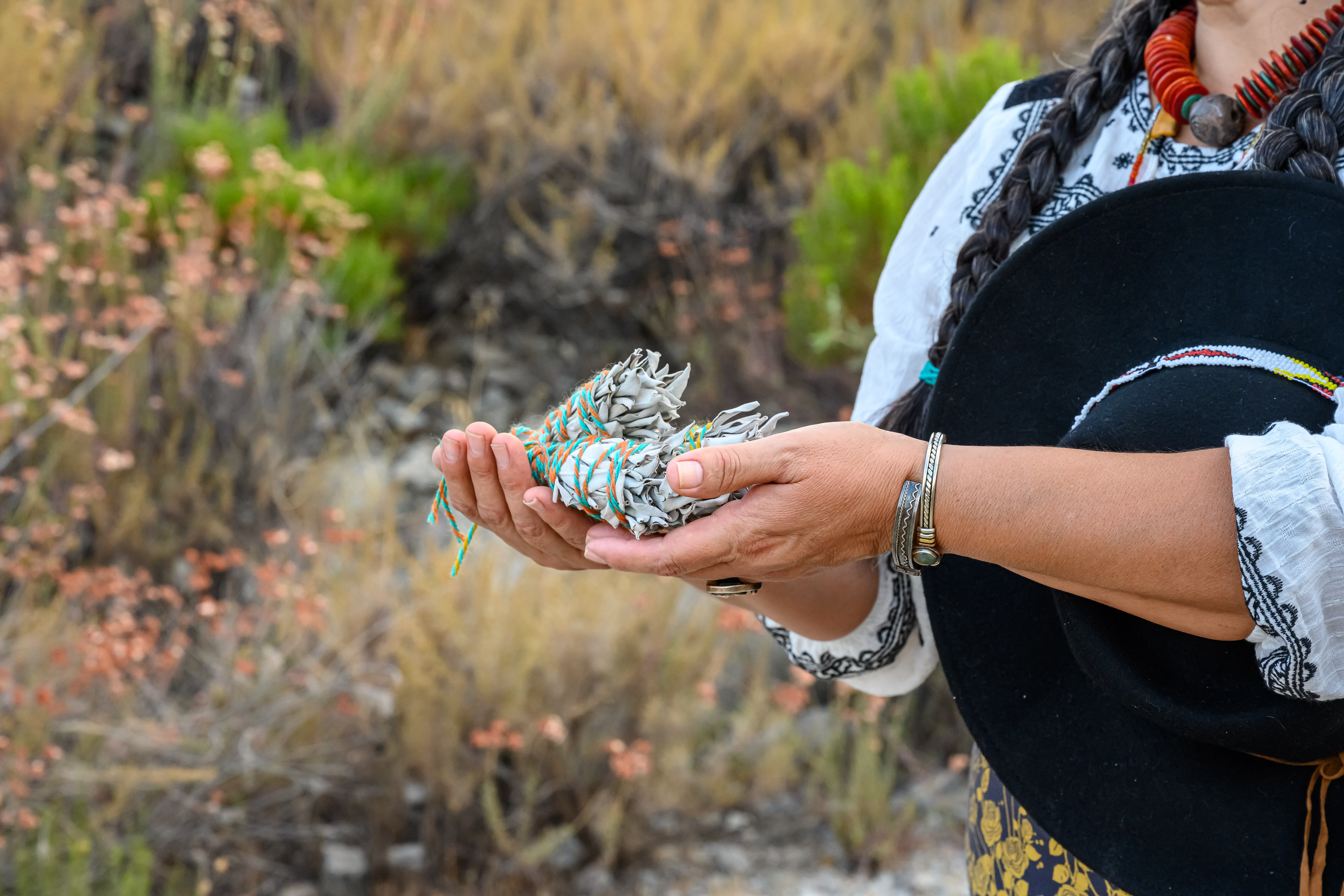
At around the same time, California saw the rise of the hippie movement, spurring new interest in alternative medicine and spirituality. For the disaffected children of postwar America, Indian culture—and often stereotypes of it—represented an alternative to the mainstream they were seeking to repudiate. From the fringes of hippie counterculture, white sage was embraced by a widening audience before “exploding” in the New Age era of the 1980s, Ramirez said in an interview this winter. But it wasn't until decades later, with the rise of social media and the wellness industry, that the plant became the commercial phenomenon that it is today.
“It’s not something you buy; it’s something that’s given to you”
Amazon currently lists more than 1,000 white sage products, including smudge sticks, incense and essential oils. There are all-in-one smudge kits with turkey feathers and abalone shells (traditionally used for cradling burning leaves) and smokeless “smudge sprays” purportedly infused with crystals. There are body creams, soaps, candles, teas. There are smudge combo packs with sticks of Palo Santo, a tree species from Latin America. Amazon even has a “Best Sage Smudging Kit” guide from an affiliate marketing company. “If you’re looking to change up the aura in your home, we’ve highlighted five sage smudging kits for you to try,” the article begins. “Check them out and be pleased with your new energy.”
This flagrant commodification of white sage is offensive to many Native people, who see it as profiting off traditional knowledge while threatening the plant’s sustainability. “It’s disrespectful to my ancestors and myself,” said Jessa Calderon, a hip hop artist who has campaigned extensively online against chain stores that stock sage. “These are medicines we’ve used forever.”
In 2018, Sephora removed a “Starter Witch Kit” from its shelves after backlash on social media; that same year, Anthropologie pulled “Home Blessings Smudge Kit.” Yet white sage is still available from major companies like Whole Foods and Walmart, as well as on countless online stores, including innumerable boutiques on Etsy. Goop may have dropped mention of sage from its newsletter, but continues to sell a “Cleanse and Purify Smudge Kit.” “People want to be spiritual. They want to be pure,” Calderon said. “But when you don’t understand somebody’s medicine, and don’t listen, what are you doing?”
Many Native users believe that white sage shouldn’t be sold at all. “It’s not something you buy; it’s something that’s given to you,” said Bogany, Valencia’s mentor. (Her tribe, the Gabrielino-Tongva, is recognized by the State of California but not the federal government; this means she, too, cannot legally gather native plants from protected areas.) Traditionally, she explained, sage was harvested with great care, picked by hand and prayed over to give thanks; commercial harvesting is rushed and violent, conducted with pruning shears and hacksaws. “This land is our church,” Bogany said. “It’s like if I walked into church and took the holy water. I would be taking something from God’s house.”
Not long ago, some of Calderon’s relatives went to pick sage outside Los Angeles. When they got there, she said, “the sage had been hacked up.” Calderon’s family was left with nothing—“There was no respectful way to harvest further,” she said. This has become a problem for Native people across Southern California: if not of outright extinction, then the erosion of access. For Valencia, who found a sense of belonging through sage, this can feel like an existential threat. “Normally where we’d harvest, it’s no longer possible,” she said. “The sage is disappearing. Are we?”
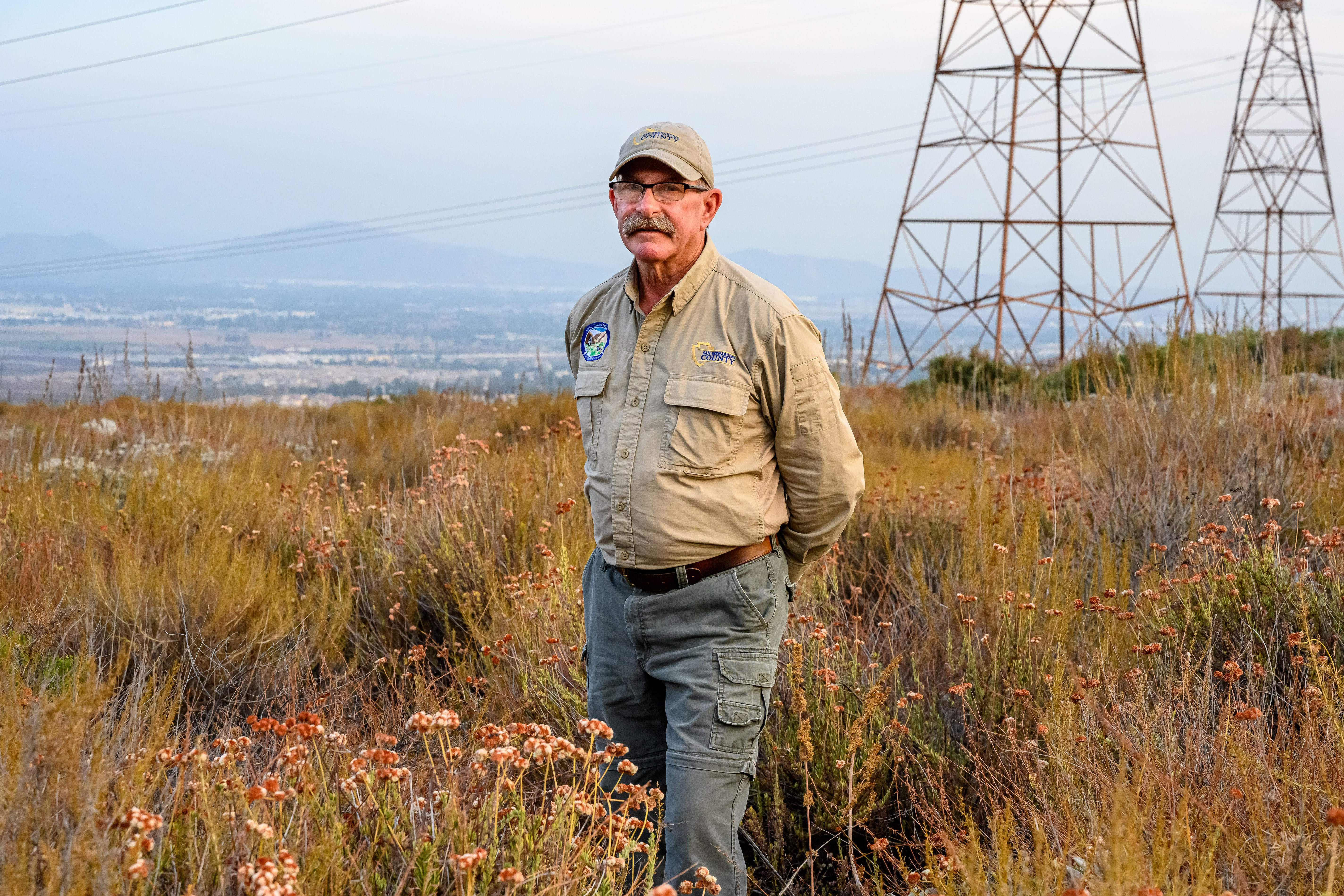
Before becoming a ranger, Ron Goodman worked in the produce industry, brokering export deals for California farmers; along the way he sourced ingredients for both of Ronald Reagan’s West Coast inaugurations. After retiring, he became a volunteer at the reserve near his home. After putting in more than 4,000 hours, he was offered a staff position. Now in his sixties, Goodman is sunburned and leathery, with an aw-shucks manner that belies his strictness. In January, when I met him, he had a Hulk Hogan mustache from the previous Movember; he’d kept it, he said, “to irritate the wife.”
Back in 2014, when he started volunteering at the reserve, sage picking was only a minor problem, with an incident every few weeks at most, he said. This slowly increased until about three years ago, when “everything blew up.” Rangers began catching poachers with 55-gallon trash bins filled with sage, who later switched to using oversized camouflage duffle sacks. Last year, Goodman and his team recorded several busts of more than 1,000 pounds.
A single pound of white sage, enough to fill a paper grocery bag, is worth about $30 at current wholesale prices. Retail prices are substantially higher. Amazon’s top seller of white sage, Alternative Imagination, has smudge sticks costing around $40 per pound, with other companies charging up to $60. (White sage is usually priced by the bundle, and bundles vary in size, making comparisons difficult for customers.) A bust of 1,000 pounds, then, amounts to $30,000 sold wholesale, or around $50,000 at market value.
Of these sums, police say that pickers earn no more than a few dollars a pound—enough, nevertheless, to drive an epidemic of illegal harvesting. According to Goodman, the pickers are predominantly Latino men; he believes many are recent immigrants. (One in five people in the surrounding region are immigrants, with advocacy groups estimating that nearly a third are undocumented.) “For many of the guys, I think this is their only opportunity,” Goodman said. “They’re not the problem—it’s the people who pay them.”
Most brands selling white sage do not harvest it themselves, instead sourcing from a network of wholesalers and middlemen. Tracing the connections between poachers and these companies is difficult—and beyond the capacity of local police. “It’s not something we’d normally assign a detective to,” said Lieutenant Allison, from the county sheriff’s department. “We just don’t have the resources for that.”
Within the small community of people paying attention to white sage, however, one company in particular is often blamed for over-harvesting. Juniper Ridge is a fragrance brand out of a #VanLife fantasy, offering hand-foraged scents from the American wilderness. There’s the Sierra Forest body wash, the Redwood Mist cologne, a collection of natural incense sticks. There are eight varieties of white sage product, including loose leaves, smudge wands, perfume and tea. The company website has pictures of white people getting their hands dirty in beautiful places: alpine slopes, muddy trails, mossy embankments. “We are building a new fragrance grammar of the American West,” reads a section on the About page.
Juniper Ridge claims to donate 10 percent of its profits to conservation causes and says they harvest plants with “utmost sensitivity and respect for the existing wildscape.” Yet the company, which operates as both a retailer and wholesaler of white sage, has been accused for years of overharvesting white sage. As early as 2015, the founder of Juniper Ridge, Hall Newbegin, felt compelled to write a blog post defending himself, arguing that white sage could be “harvested sustainably indefinitely.” Juniper Ridge only picked sage on private land, he said, blaming other companies for causing the problem.
“I’m probably one of a dozen people in the world who knows all the harvesting crews,” he wrote. “The crews that clearcut the white sage fields needs [sic] to be stopped.”
I tried several times to contact Newbegin; if he was being honest, I thought he’d want to talk to a reporter. I also wanted to ask about an encounter he’d had with Susan Leopold, the executive director of United Plant Savers, who met with him in March 2019 to see where Juniper Ridge sourced its sage. According to Leopold, Newbegin took her to the reserve where Ron Goodman works, seemingly unaware that harvesting sage there was illegal. When she challenged him, she said, he changed his story, telling her that Juniper Ridge sourced white sage cultivated on farms.
I never managed to get hold of Newbegin. This June, at the age of 52, he fell down a flight of stairs and broke his neck, dying of heart failure after surgery. The chief operating officer of Juniper Ridge, Leah Fritts, wrote to me in an email that Juniper Ridge was “transitioning to 100% cultivated white sage” but that Newbegin’s death had delayed the process. “Regardless,” she said, “we have always harvested White Sage with great care.”
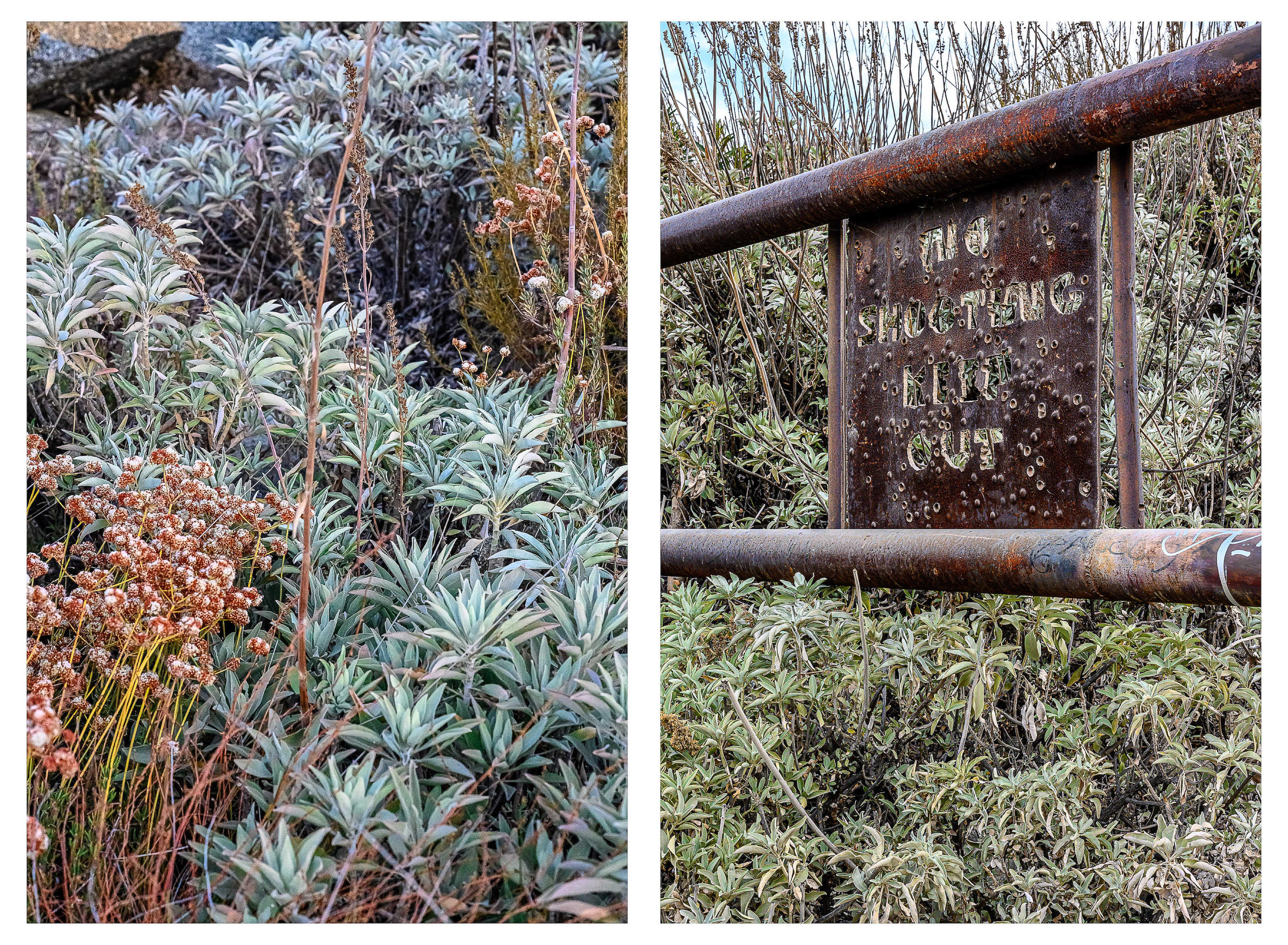
The transformation of white sage from indigenous medicine to commercial product is not a singular story. In the 1990s, wildcrafters in the United States poured onto tribal lands to harvest echinacea, a traditional Native American herb that now supports a global market worth hundreds of millions of dollars annually. At the Fort Peck Indian Reservation, in Montana, brokers for herbal companies held competitions to find the largest root; a local six year-old boy who placed second at one of these events told the reservation newspaper that he was “heavy into rooting.” Tribal members soon fell into bitter disputes about the harvest, which had become an important source of income but also led to declines of the plant. Rising demand also led to poaching on federal reserves across the Midwest; in one incident, a biker gang from Kansas was found digging echinacea in South Dakota—they were on their way to a rally, and the roots were to fund the trip.
The rise of echinacea farming has helped offset some of this demand, but countless other species remain at risk from commercial harvesting. The value of the global trade in medicinal and aromatic plants was valued at $3.3 billion in 2018—a nearly threefold increase from two decades earlier. Of the approximately 26,000 plant species with documented medicinal or aromatic uses, fewer than a fifth have been assessed for conservation threats, according to a recent report by the conservation nonprofit Traffic. As much as 90 percent of the trade is supplied by wild harvesters, often from rural or impoverished communities. This vast and expanding industry operates largely free of oversight, its environmental and cultural costs invisible to most customers. Hundreds of species face extinction in the wild, including the plants used to produce frankincense and shea butter.
Bryony Morgan is the executive officer of the FairWild Foundation, a certification scheme for wildcrafted plants that seeks to promote fair labor standards and sustainable harvesting. “It’s the nature of these trade chains,” she said. “There’s a lot of middlemen, a lot of traders. Often people have no idea where wild ingredients are coming from.”
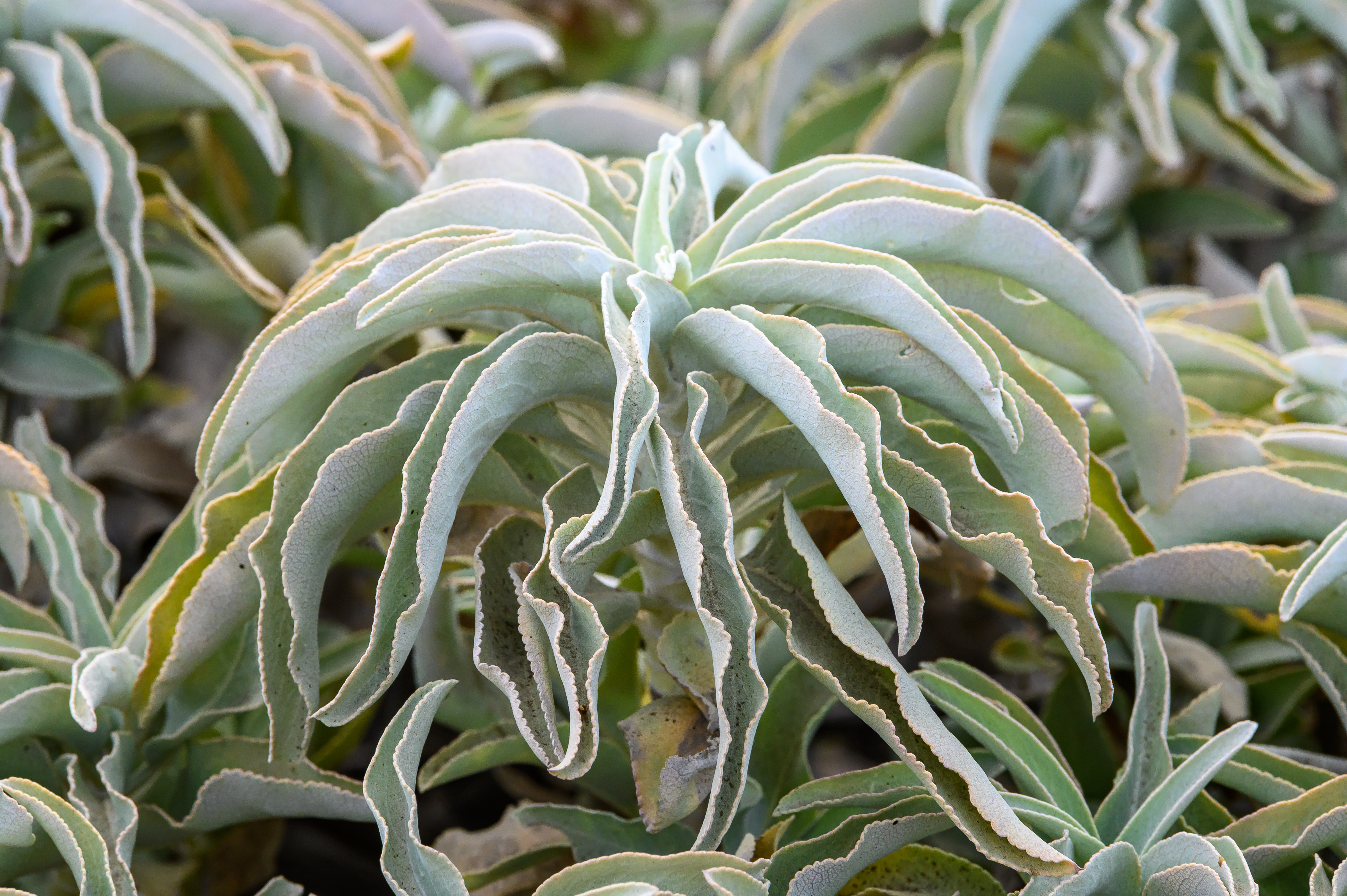
Last winter, I began contacting companies that sell white sage. Most declined to tell me where their products originated. Sacred Eagle Imports, an online store based in England, indicated that they imported white sage from multiple wholesalers and had no mechanisms in place to ensure sustainable sourcing. Bursera, a company in Canada that advertises farmed white sage, said the identity of their supplier was “proprietary information.” Alternative Imagination also claims to use farmed white sage; when I called their shop in Florida, a woman named Alison said they sourced from “a mixture of smaller suppliers and wholesalers” that changed according to “who was harvesting.” Other companies weren’t sure where their white sage came from, such as Moonbeams and Fairy Dust, a store in Virginia that offers smudge sticks “sustainably harvested by Native Americans.” When I emailed to ask for details, the owner replied: “I buy them from another vendor that claims that. I honestly don’t know how to verify this information.”
“The sage is disappearing. Are we?”
The vendor she buys from, Windrose Trading, says on its website that its smudge sticks are “sustainably harvested by Native Americans” and that “a portion of sales supports a Native American reservation cooperative.” I contacted the company by phone and by email, hoping for more details, but never heard back.
Another major wholesaler of white sage is Native Scents, a company based in Taos, New Mexico. The owner is a man named Alfred Savinelli who was implicated in a major LSD bust in 2000 and who claimed in a 2017 VICE documentary—misleadingly, it turns out—to have pioneered the practice of smoking hallucinogenic toad slime. So I was intrigued, but also wary, when he told me in February that he’d “invented the market” for white sage.
The son of an Italian father and Native American mother, Savinelli said he started working with medicinal plants in the 1970s, after apprenticing with the Lakota Sioux leader Archie Lame Deer; then he laughed, as he did throughout our conversation, and added: “Or was it that plants started working with me?”
In the 1980s, he began harvesting sage from the mountains near Santa Barbara, often camping out for weeks at a time. First he worked solo; then he recruited a crew of pickers, supplying traders up and down the coast. His sales increased until the turn of the millennium, when he says white sage “became a worldwide phenomenon.” He began shipping internationally, including to the Middle East, where he believes his customers included members of the US military.
“I didn’t see over the horizon of what this market would become,” he told me. “Sage went from being something special to a commodity.” Demand had started outstripping supply, he said. “The esoteric wisdom of Native people has become a fad.”
This hadn’t stopped him from selling the plant himself; just that week he’d spent $30,000 on wildcrafted sage from San Diego. “I guess you could say I have mixed feelings,” he said. Then he changed track and mounted a defense of wild harvesting. Concerns about sage were “unfounded and untrue.” Harvesting the plant only made it grow faster. White sage created income for marginalized pickers. The supply was endless if you knew where to look.
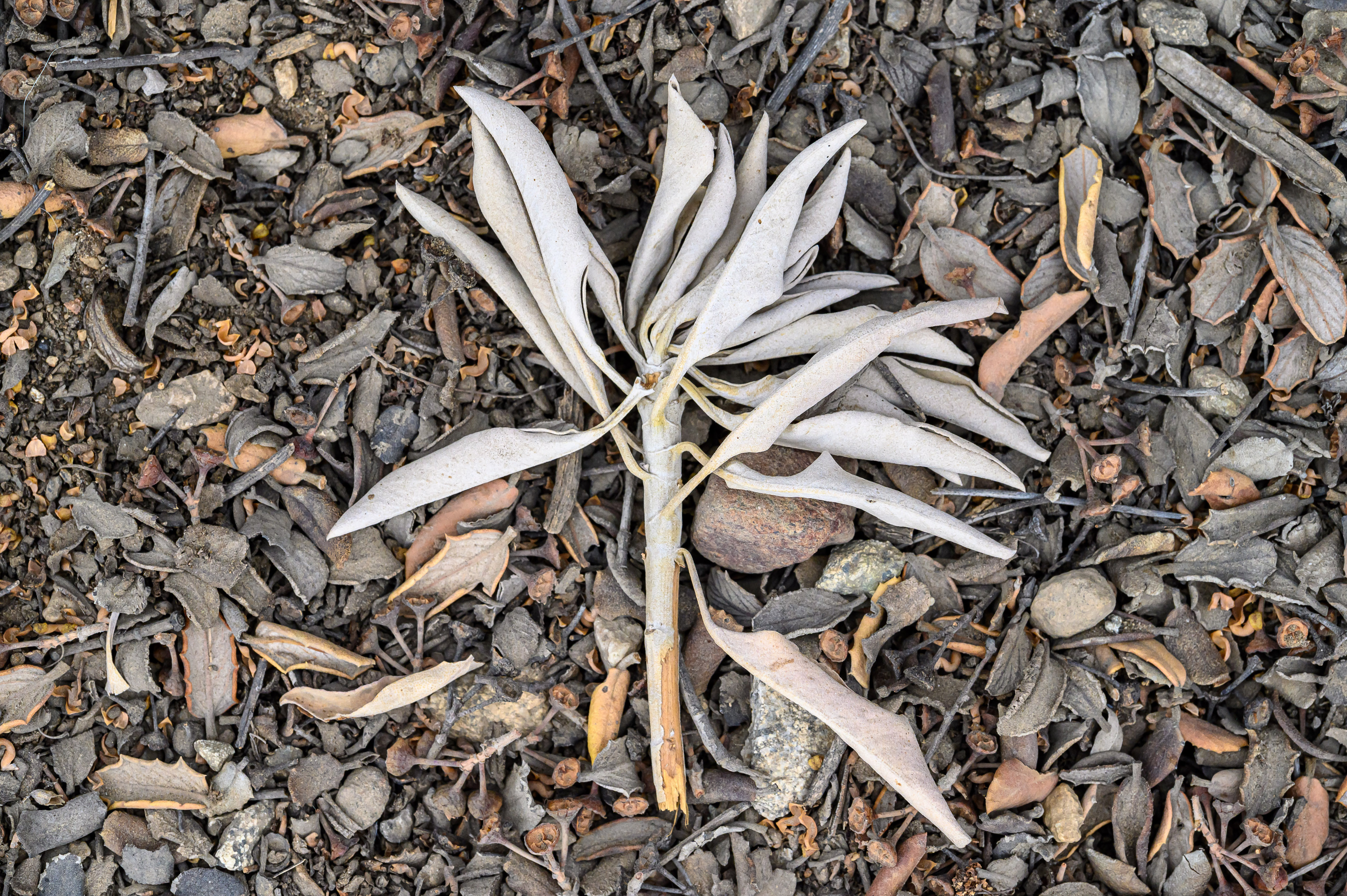
In search of more sustainable sources of white sage, I drove south to meet Ellen Woodward and Ken Taylor, a hippie couple in their 70s who claim to be the world’s first commercial farmers of the plant. They live east of San Diego, at the edge of the Colorado Desert and less than three miles from the Mexican border; migrant trails wind through the granite hills, surveilled by border agents and private militias. The landscape is sparse and militarized, making the entrance to Woodward and Taylor’s property especially incongruous: a giant hand-painted board in psychedelic colors, surrounded by stars, swirls and synesthetic blobs, that reads SAGE WINDS FARM.
I arrived after dark and drove up to the farmhouse, where I was greeted by an assortment of shy, friendly dogs. The porch was spilling over with geraniums and succulents. There were wind chimes and rocking chairs and a “Hippies Use Backdoor” sign. Through the window I could see Woodward hunched over at a computer, cradling a cordless phone with her shoulder and leafing vigorously through a notebook. She is tiny and wrinkled and energetic and quite deaf; she tends to talk loudly, so I could hear everything she was saying.
“Did you pay when you made the order? That’s very unusual.”
“You bet almost all sage is wild harvested. We actually farm sage.”
“You know they use sage in Japan? I believe they’re using it to soak up radiation.”
She was wearing a tie-dyed shirt with long, loose sleeves, and her white hair glowed in the light of the screen. When she finished I rapped on the window, worried I’d startle her, but she burst out laughing and threw open the door.
Inside I met Taylor, who is older and quieter, with thinning hair and a white goatee, and several more dogs that bounded around us. Woodward yelled at the dogs and asked me a question: “Do you smoke pot? We’re potheads. We vaporize. We’re about to do that right now.”
In the morning, after firing up the vaporizer again, she showed me around the farm. In front of the house lay a plot of about an acre with white sage growing in uneven rows. The plants were bushy and tall, orbited by bees, with lush, soft, pungent shoots. Unlike most crops in California, white sage is adapted to the landscape, requiring little water and no fertilizer. The species is also resilient to pests. Woodward wages battle against gophers and rabbits, flooding tunnels and laying traps, but otherwise, she told me, “the sage looks after itself.”
Sage Winds has been certified organic since 2013—the first such farm in the United States, Woodward says. (Her son-in-law has begun farming white sage in San Diego, as have two companies in Oregon.) Later, we spent some time browsing Amazon for organic smudge sticks. “We don’t sell to them, don’t sell to them either,” Woodward frowned. “Man, this is all bullshit!”
Woodward grew up in an upper-middle-class New England family and studied at the Rhode Island School of Design, but was expelled at 19 for having an abortion. Her boyfriend was a Black man named Eric; they married soon afterwards and moved to San Diego. “So that was something for my family to deal with,” she told me. “In the South, there’d have been crosses burning in our yard.”
In the 1980s she became a tie-dye artist, traveling to New Age markets across the country. Later she began picking sage to sell with her designs. But as demand grew, she said, she was disturbed by its impacts. “Wild harvesters go out with big trucks,” she said. “They bring distillers for making oil. They’re out to get all the sage they can get.”
In around 2010, she and Taylor began trying to cultivate the plant, using seeds from white sage growing naturally on their land. It took three years of trial and error. “You have to understand how the plant grows,” Woodward said. “You have to harvest really respectfully.”
Since then, their orders have shot up to around $70,000 per year, with customers around the world: in New Zealand, South Africa, Germany, Mongolia. Their biggest market besides the United States is in Japan, where several companies have standing orders of more than $1,000 monthly. “The demand is so heavy, and it just keeps increasing,” Woodward said. “It’s being used as a crop. It should be grown as a crop.”
Not everyone agrees that farming is the solution; instead, some users have begun growing the plant at home. Commercial farming is “feeding the same market,” said Calderon, the rapper. “People are profiting off something they have no business profiting off.”
When I asked Taylor, who grew up in Texas, what he made of this criticism, he nodded sadly and said: “I can sympathize with that.” But given the scale of demand, he said, farming was necessary. “We’re adding to the sage, not taking away.”
A few years ago, he said, members of a nearby Kumeyaay tribal reservation began ordering smudge sticks, sometimes as many as 1,000 a year. “They’re happy we’re farming it,” Taylor said.
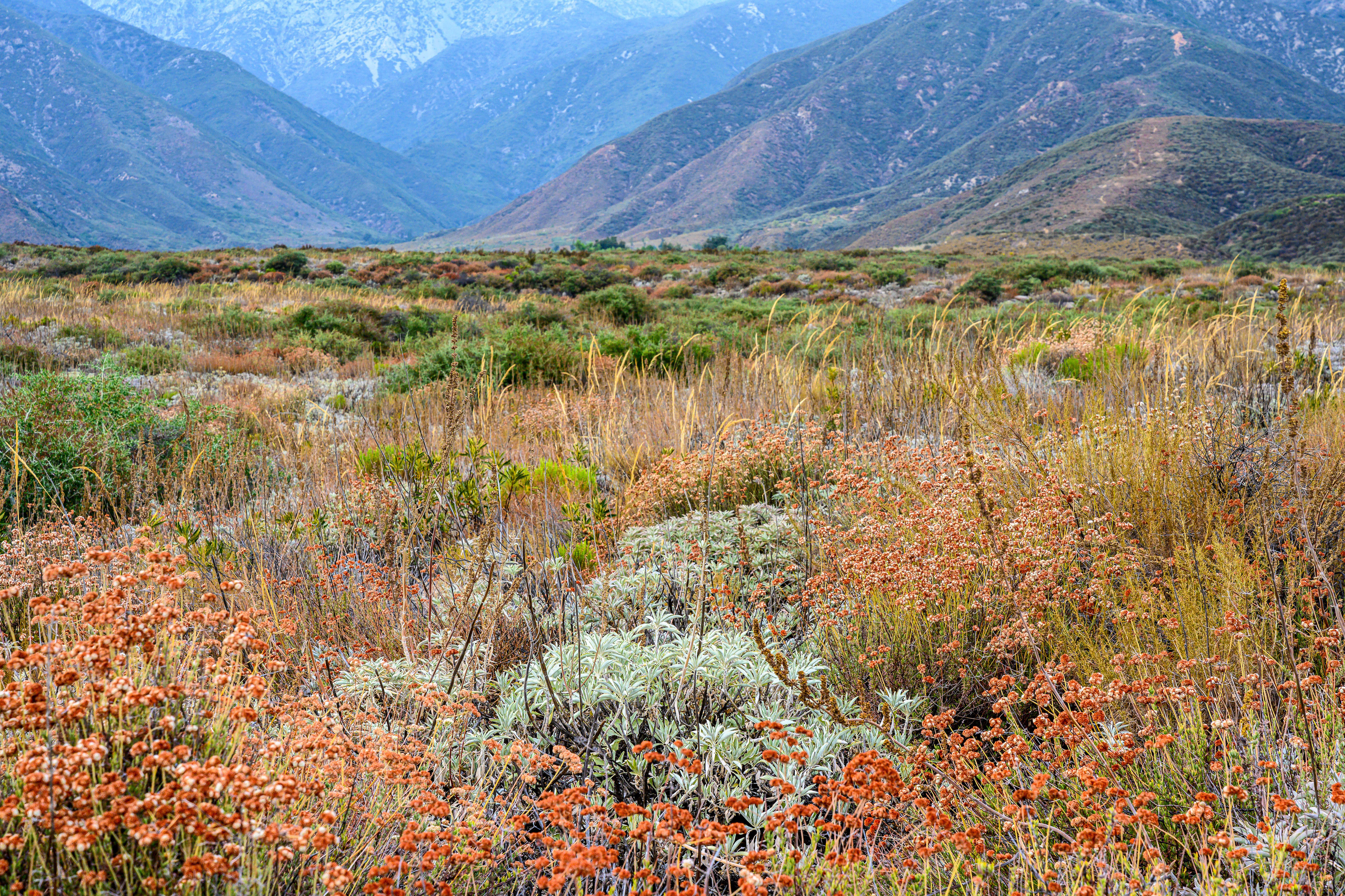
Marsha Valencia tried for years to grow sage. The plants died every time. She continued wild harvesting, making do with less; instead of burning bundles, she started burning single leaves.
But through her confrontation with Ron Goodman at the reserve, almost a year ago, Valencia found a new way to access the plant. After threatening to arrest her, Goodman asked her to meet him the next day. He arrived with a sack of confiscated clippings. Valencia took the sage to her next women’s circle, where they dried and carefully wrapped it. But first they performed a ceremony to purify the leaves, praying and playing Native music. “That energy’s still on there—that rush and cutting and chopping,” Valencia said. “We apologize to the plant and explain what has happened.”
Goodman started calling Valencia each time there was a bust. She began distributing sage to Native organizations across the region, including schools, rehab facilities and prison support groups, as well as members of federally unrecognized tribes. “It’s like a hotline,” she said. “That sage has gotta move.” To date, Goodman has provided her with hundreds of pounds.
Goodman told me that his view of the reserve had changed since meeting her. “This is their sacred land; we manage it,” he said. He joked, when I was there, about wishing to attend a tribal ceremony—difficult to picture, but his intention seemed sincere.
Poaching has been lower this summer, he said, perhaps due to the coronavirus pandemic shutting down the global economy. At the same time, demand for the plant has risen in many places, driven by the belief that its smoke has antimicrobial properties. The reserve closed down in April and reopened in May, drawing as many as 2,000 visitors daily. In late July, as I was finishing this story, Goodman told me poaching was increasing again.
Recently he recruited Valencia as a volunteer at the reserve, where she educates hikers about Native traditions. She continues to distribute confiscated sage, often crying when she sees the overstuffed bags. There is no way of undoing the damage to the plant. “I’m grateful I have it,” she said, “and heartbroken it may not grow back.”
Follow Kimon de Greef on Twitter.
from VICE US https://ift.tt/3giT4t2
via cheap web hosting
No comments:
Post a Comment